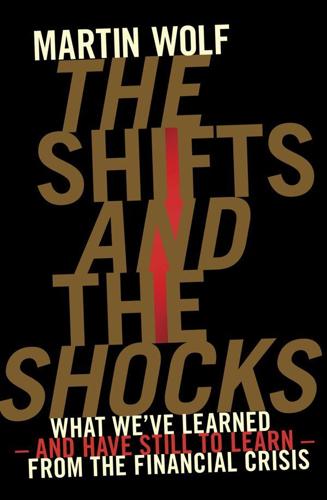
The Shifts and the Shocks: What We've Learned--And Have Still to Learn--From the Financial Crisis
by
Martin Wolf
Published 24 Nov 2015
So erstwhile borrowers were forced to lower their spending dramatically, willy-nilly. Meanwhile, creditors found that their wealth and incomes were lower or less certain (or, usually, both) than they had been before the crisis. So they did not want to spend more either. Bringing debt to sustainable levels is a long-term process: in an important study of post-crisis private-sector de-leveraging, the McKinsey Global Institute notes that this has taken between four and six years in previous cases, such as Finland and Sweden in the early 1990s.59 The second reason why the impact of a financial crisis is so prolonged is that the sustained rise in debt and associated spending distorts economies.
…
However, what was done halted the immediate panic and then reversed the downswing that was well under way in late 2008 and early 2009. It succeeded in doing so even though the recession was initially as bad as it had been in 1930. Unfortunately, policymakers failed to sustain the policies required to support private-sector de-leveraging and so avoid a prolonged balance-sheet recession. Largely as a result, the recovery proved weak or even withered away altogether in 2011 and 2012. For this unhappy outcome, the Eurozone crisis was partly responsible. It turned out to be the second act of the global financial crisis. It is, accordingly, the subject of the next chapter. 2 The Crisis in the Eurozone Whatever role the markets have played in catalysing the sovereign debt crisis, it is an indisputable fact that excessive state spending has led to unsustainable levels of debt and deficits that now threaten our economic welfare.
…
In aggregate, then, the private sector is likely to move towards a surplus, which must be offset elsewhere in the economy, since, by definition, financial surpluses (differences between income and spending) add to zero across the economy as a whole once the foreign sector is included. The sector best suited to run the countervailing deficits in a crisis is the government. The response to the objection that it makes no sense for the public sector to go into debt in order to help the private sector de-leverage, is that the new debts will effectively be borne by different people. This then is a way of replacing bad debts with better ones. A vital element, however, is orderly debt restructuring. The government can help with this by subsidizing or supporting debt-for-equity swaps, particularly in housing finance.
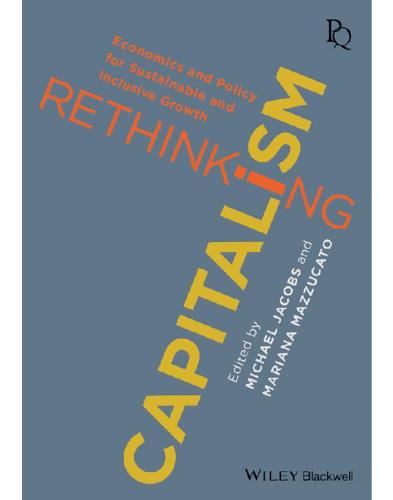
Rethinking Capitalism: Economics and Policy for Sustainable and Inclusive Growth
by
Michael Jacobs
and
Mariana Mazzucato
Published 31 Jul 2016
The pattern that led to the crisis was strikingly similar to that theorised by Minsky’s ‘financial instability hypothesis’.12 During the boom, private actors—especially households and banks, in this case—started piling up debt at an increasing rate. Then, suddenly, after a fall in house prices, the speculative fever was reversed, generating systemic financial distress and pushing most private actors to try to reduce their indebtedness simultaneously. In other words, when the housing bubble burst, the private sector looked to deleverage by spending less, saving more and paying down debt. There was a strong desire to return to a surplus position.13 Figure 2: Sectoral financial balances in the US (% of GDP; 1970–2013) Source: US Department of Commerce The problem, as Keynes explained in his 1936 masterwork The General Theory, is that the spending multiplier also works in reverse.14 That is, a diminution in aggregate spending tends to have an amplified effect on GDP as the initial decline in spending lowers income, which then leads to further decreases in spending, and so on.
…
No fiscal policy changes explain the collapse into massive deficit between 2007 and 2009, because there was none of any importance. The collapse is explained by the massive shift of the private sector from financial deficit into surplus . . . The government responds in a largely passive way. But the government’s deficit did more than just passively reflect the private sector’s attempt to deleverage; it actively restored private sector balance sheets by providing the very (financial) assets the private sector was seeking. To appreciate this, look back at Figure 2 and compare the private sector’s financial balance (black line) at the start of the crisis (2007) with what took place post-2007.
…
In the wake of the Great Recession, this provisioning enabled the private sector to quickly23 return to its habitual state of surplus, thereby halting the downward slide in output and employment. This process is crucial, so it is worth discussing it in detail. If the private sector suddenly wants to run a huge surplus (in order to deleverage), there must be a public sector that is able to accommodate this shift by running a large deficit. If, instead, the public sector is not willing to increase its deficit enough, another variable has to adjust, and this variable is output: as Krugman recognises, in the absence of a large public deficit, GDP would have decreased much more.

The Great Demographic Reversal: Ageing Societies, Waning Inequality, and an Inflation Revival
by
Charles Goodhart
and
Manoj Pradhan
Published 8 Aug 2020
Table 6.1Where are global real interest rates heading in the long-term? Driving factors Impact on real interest rate: slightly up Shift in saving curve • Demography: rising population of older people • Lower savings in emerging markets Upward Shift in investment curve • Pressure from private sector deleveraging eases • Public sector investment rises slightly • Importance of intangible investment remains high Slightly upward Portfolio shifts • Little change of regulatory preference for government bonds • Preference for safe assets on the side of investors remains? Unchanged? Productivity growth • Positive impact of information and communication technology Slightly upward Source Heise (2019).
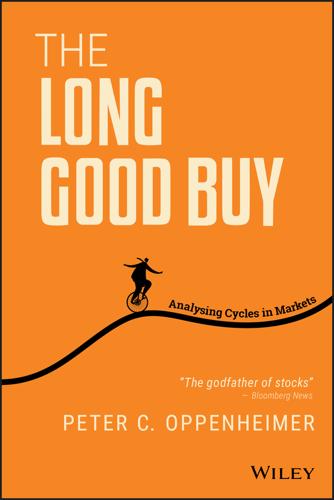
The Long Good Buy: Analysing Cycles in Markets
by
Peter Oppenheimer
Published 3 May 2020
The lower volatility of financial assets should make cycles more predictable, as long as this remains the case, but it is plausible that the anchoring of inflation and low rates will make cycles much longer in the future. Another positive factor here is that private sector imbalances are much smaller, helping the private sector to be more resilient to shocks and reducing the risks of private sector deleveraging. Exhibit 9.14 Median S&P 500 company trailing 10-year EBITDA growth variability SOURCE: Goldman Sachs Global Investment Research. Exhibit 9.15 EPS rarely falls outside of recessions (MSCI AC World annual realised earnings growth, grey shading indicates recessions [US, Europe, Japan, EM]).

No Ordinary Disruption: The Four Global Forces Breaking All the Trends
by
Richard Dobbs
and
James Manyika
Published 12 May 2015
Between 2007 and 2012, the governments of the United States, the United Kingdom, and the Eurozone collectively saved nearly $1.4 trillion on lower interest payments on their debt, which allowed them to spend more.40 Ultralow interest rates also helped the housing sector recover more quickly than anticipated. In Japan, ultralow interest rates are nothing new. As the private sector deleveraged aggressively after the 1980s credit boom, the government ran large fiscal deficits to offset depressed demand and activity. At the same time, the central bank kept interest rates low and generally expanded its balance sheet. After two decades of low growth and continued debt monetization, Japan’s annual fiscal deficit peaked in 2011 at just under 10 percent of GDP; the country’s gross public debt is above 240 percent of GDP.41 This level of debt has been sustainable because most Japanese debt is owned domestically.42 However, Japan’s demographic outlook means that the country is unlikely to be able to repay the debt traditionally, and it might need to monetize its government debt over the coming years.
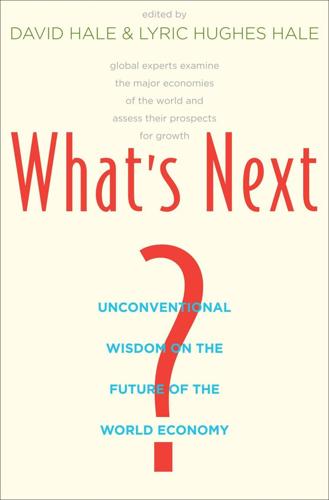
What's Next?: Unconventional Wisdom on the Future of the World Economy
by
David Hale
and
Lyric Hughes Hale
Published 23 May 2011
But again, as in 1990s Japan, the adoption of unprecedented fiscal and monetary policies failed to revivify the corporate, household, and banking sectors in most of the major economies because businesses had not yet achieved their target levels of leverage and therefore insisted on paying down their debts still further. This represents a long-term problem for most of the advanced economies because private-sector deleveraging will require at least another few years and must then be followed by public-sector deleveraging in the form of painful spending cuts and more onerous taxes. The prospect is thus one of subdued growth until perhaps 2020. In the medium term, help will arise from the developing world. China, India, Brazil, and other poor countries are on the verge of attaining enough combined size to counterbalance the sluggishness in the developed world and impart significant positive momentum to global GDP growth, but this effect will not become truly pronounced for several more years.

The Invisible Hands: Top Hedge Fund Traders on Bubbles, Crashes, and Real Money
by
Steven Drobny
Published 18 Mar 2010
One of the more significant questions facing all investors is whether a three-decade tail wind for risk assets—due to falling inflation and declining interest rates—could be over, now that the main economic blocks (United States, Europe, Japan) have no inflation and near-zero interest rates. Fiscal deficits, increasing public sector debts, private sector deleveraging, and populist and protectionist politics around the globe all point to increased volatility and a move away from “price stability.” Still, real money accounts have an overwhelming proportion of their portfolio in equity and equity-like investments. The status quo for real money management is no longer tenable.
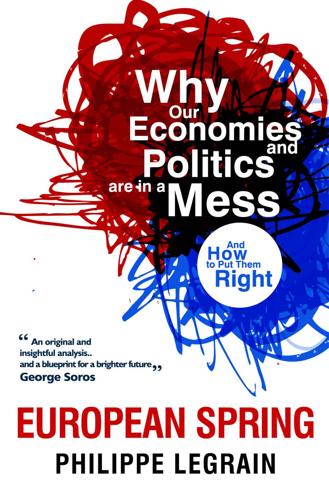
European Spring: Why Our Economies and Politics Are in a Mess - and How to Put Them Right
by
Philippe Legrain
Published 22 Apr 2014
, OECD Economics Department Working Papers, No. 993, 2012. http://dx.doi.org/10.1787/5k918xk8d4zn-en 209 Brad DeLong and Lawrence Summers, "Fiscal Policy in a Depressed Economy", Brookings, 20 March 2012 http://www.brookings.edu/~/media/Files/Programs/ES/BPEA/2012_spring_bpea_papers/2012_spring_BPEA_delongsummers.pdf 210 http://www.ecb.int/press/key/date/2010/html/sp101012.en.html 211 http://blogs.ft.com/martin-wolf-exchange/2012/07/30/accelerating-private-sector-deleveraging/ 212 Global risk-free interest rates, that is. There will still be a premium on top of that for credit risk and other risks. 213 International Monetary Fund, World Economic Outlook, April 2013, Figure 1.4 214 For example, on a supportive visit to Portugal in November 2012, Angela Merkel praised Lisbon for the “courageous way” it had implemented deficit-reduction measures, saying there was “at the moment no reason to renegotiate” the adjustment programme. http://www.ft.com/cms/s/0/fedad66a-2ca2-11e2-9211-00144feabdc0.html 215 The economy shrank by 0.1 per cent in Q2 2011.
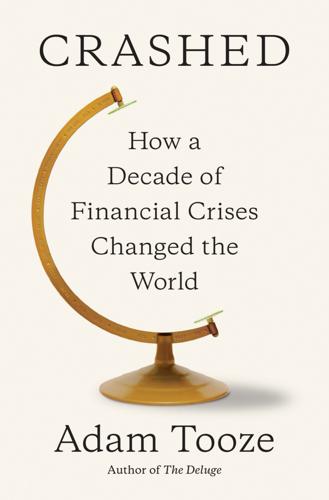
Crashed: How a Decade of Financial Crises Changed the World
by
Adam Tooze
Published 31 Jul 2018
As profits, wages and spending all declined, this automatically generated a deficit and thus an offsetting public stimulus. This puts a rather different perspective on the fiscal policy battles at the G20. Though Germany, France and Italy steered clear of the kind of stimulus package launched by the Obama administration, let alone that trumpeted by Beijing, their deficits were widening too. As the private sector deleveraged and cut its spending, they too saw huge nondiscretionary deficits. Indeed, it would have taken a heroic and truly perverse act of austerity to prevent these automatic stabilizers from coming into effect. The net result was dramatic. Between 2007 and 2011, demand in the world economy was stabilized by the largest surge in public debt since World War II.
…
America’s households were rebuilding their savings. Mutual funds were shifting out of risky mortgage bonds. Everyone wanted Treasurys. These were the kinds of systemic macroeconomic and financial mechanics that all too often escape fiscal hawks, who view the public budget like that of a private household. When the private sector is undergoing a shock episode of deleveraging, when the savings rate is surging as it was in 2009, what is needed to preserve the overall financial balance of the national economy is not for the state to cut its deficit too. Everyone cannot save at once without provoking a recession. As the proponents of “functional finance” have argued since the 1940s, the state must act as a borrower of last resort.26 In so doing it preserves aggregate demand and provides a flow of safe long-term bonds to financial markets.

Expected Returns: An Investor's Guide to Harvesting Market Rewards
by
Antti Ilmanen
Published 4 Apr 2011
The corporate sector also borrowed more, but the most dramatic leveraging occurred in the financial sector. Here, too, the pendulum was shifting and the turn in the private debt/GDP ratio in 2008–2009 was likely only the beginning of a longer balance sheet healing process. Aggressive public-sector borrowing is partly offsetting private-sector de-leveraging. Figure 27.1. U.S. inflation mountain after World War II. Sources: Bloomberg, Federal Reserve Bank of Philadelphia, Blue Chip Economic Indicators, Consensus Economics, Sharon Kozicki. Figure 27.2. Declining macroeconomic volatility: Falling output volatility and inflation volatility since the 1930s.

Them And Us: Politics, Greed And Inequality - Why We Need A Fair Society
by
Will Hutton
Published 30 Sep 2010
Aside from sixty dissident economists who wrote to the Financial Times in the run-up to the general election, there was little support for caution over rapid shrinking of the budget deficit. But unless Western governments, including Britain’s, spend and borrow at least to compensate for the ongoing stagnation in private demand as overstretched sectors deleverage, the risk is that simultaneous deleveraging by the public and private sectors will force exposed countries into prolonged stagnation, or possibly depression. The debt moralists who insist that Britain must reduce its budget deficit fast are basing their judgements on fair-weather times and fair-weather economics.
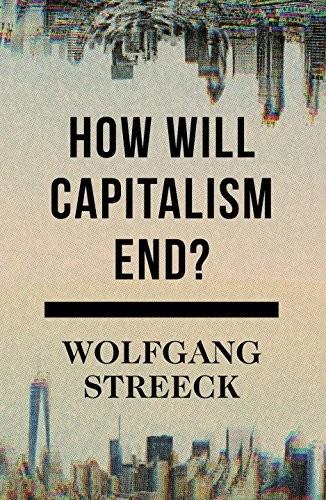
How Will Capitalism End?
by
Wolfgang Streeck
Published 8 Nov 2016
This, however, was beyond the capacities of central banks, which: cannot enact the structural economic and financial reforms needed to return economies to the real growth paths authorities and their publics both want and expect. What central-bank accommodation has done during the recovery is to borrow time … But the time has not been well used, as continued low interest rates and unconventional policies have made it easy for the private sector to postpone deleveraging, easy for the government to finance deficits, and easy for the authorities to delay needed reforms in the real economy and in the financial system. After all, cheap money makes it easier to borrow than to save, easier to spend than to tax, easier to remain the same than to change.
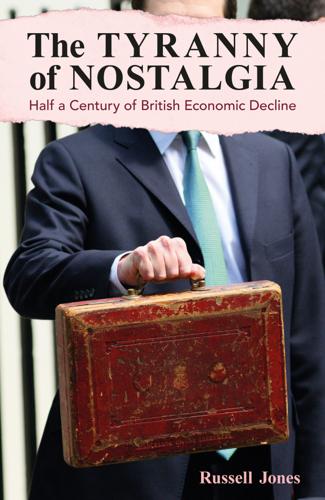
The Tyranny of Nostalgia: Half a Century of British Economic Decline
by
Russell Jones
Published 15 Jan 2023
Discretionary fiscal interventions also work better when they are internationally coordinated and around the zero interest rate bound, where the financial constraints on their employment significantly abate. Beware Concerted Fiscal Consolidation Just as discretionary fiscal stimulus is enhanced by international coordination, the effects of fiscal restraint are magnified when others are pursuing the same strategy or, for that matter, when the private sector is aggressively deleveraging. ‘Expansionary fiscal contractions’, meanwhile, are rare beasts. They occur only in very specific circumstances, and in particular when confidence has been lost in the public finances and debt service costs have exploded higher. Fiscal Austerity Has Its Limits Sovereign debt crises are usually the result of private sector credit booms turning to bust.
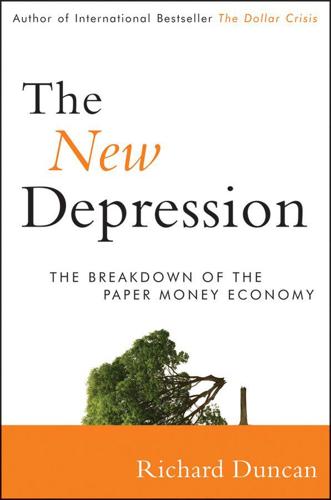
The New Depression: The Breakdown of the Paper Money Economy
by
Richard Duncan
Published 2 Apr 2012

Currency Wars: The Making of the Next Gobal Crisis
by
James Rickards
Published 10 Nov 2011

The Blockchain Alternative: Rethinking Macroeconomic Policy and Economic Theory
by
Kariappa Bheemaiah
Published 26 Feb 2017
For example: Between 2008 to 2015, the US household debt to GDP ratio fell from 99.03 to 79.95,14 and private debt to GDP fell from 212.28% of GDP to 194.72 % of GDP.15 At the same time, public debt to GDP went from 92.34% to 125.34%16 for the same time period. Figure 1-2 illustrates this phenomenon. Figure 1-2.Shifting of debt between private and public sectors Source: “Debt and (not much) deleveraging” (2015), McKinsey Global Institute Although the figure shows a general upward trend with regards to public debt growth, the same report goes on to show that evolution of debt and debt overhang is getting increasingly divergent and picking up pace. Moreover, in a few developed countries such as France, Sweden, and Belgium, private sector debt has actually grown since the crisis along with public sector debt.

Crisis Economics: A Crash Course in the Future of Finance
by
Nouriel Roubini
and
Stephen Mihm
Published 10 May 2010

Hedge Fund Market Wizards
by
Jack D. Schwager
Published 24 Apr 2012

Big Debt Crises
by
Ray Dalio
Published 9 Sep 2018